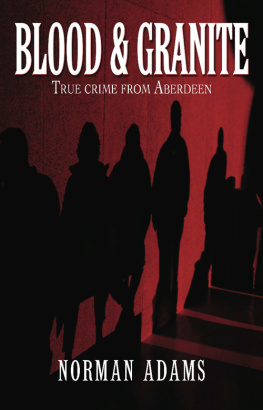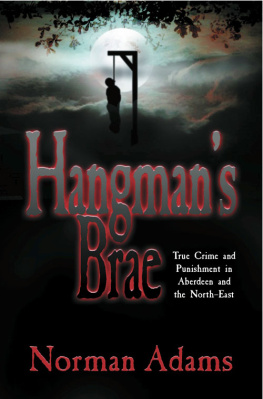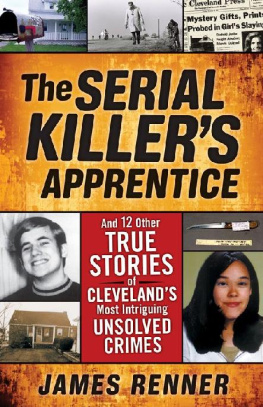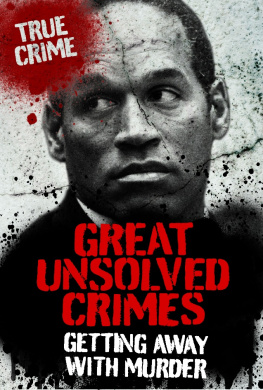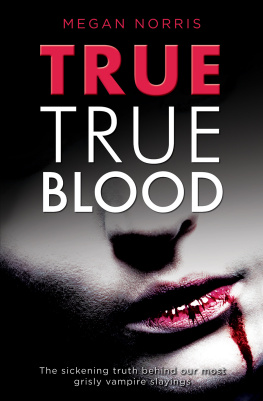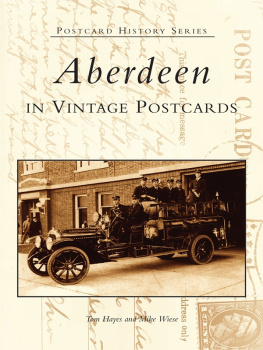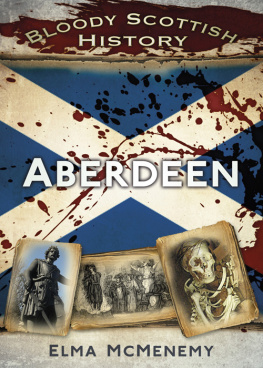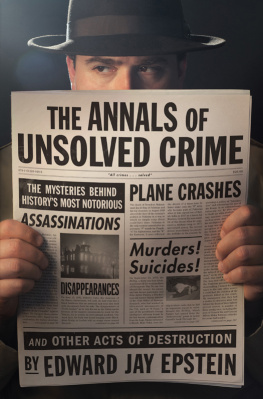
Many people have helped in my search for murder and mystery in Aberdeen in the twentieth century and I am indebted to all of them. I wish to thank ex-Detective Superintendent Harry Halcrow, the former head of Aberdeen CID, who generously shared some of his experiences during his time with the force, which he joined in 1939. I am also grateful to other former policemen for their assistance. These include: Jim McLeod, who rose through the ranks to retire as boss of Grampian Police CID in 1988; Hamish Irvine, who wrote the first official history of Grampian Police while a serving officer; and Raymond Mack, Grampian Police Welfare Officer. Journalists who provided me with the backgrounds to several cases include: Graeme Smith, The Heralds man in Aberdeen; the late Adam Borthwick, who was Northern News Editor of the Scottish Daily Express; Ione Campsie; Ron Paton, former London Editor, D C Thomson & Co. Ltd.; Ron Ferrier, former Assistant Editor of Aberdeens Evening Express; and Gordon Argo, retired Aberdeen journalist.
My sincere thanks are also due to Ian Watson, Head of Rights and Information, SMG Publishing, for allowing me to use material from the Glasgow Herald, subsequently The Herald. Donald Martin, former Editor of Aberdeens Evening Express, David Knight, Assistant Editor, Press and Journal and David Hamilton, Executive Editor, Scottish Daily Express, also gave me permission to use information from their files.
I must also thank Mr Hamilton and The Mitchell Library, Glasgow, for allowing the use of the Phantom photograph and Murray Foote, Deputy Editor, Daily Record, for his help. I am grateful to Aberdeen Journals Ltd, their head librarian Duncan Smith, colleague Bob Stewart and printer Bruce Irvine for providing illustrations and information. Credit also goes to Tony Murray of SMG Picture Library, Glasgow, to my son, Norman G Adams and to William Gloyer who gave me permission to use the Betty Hadden search picture which was taken by his late father, Marshall H Gloyer.
The late J Geddes Wood, founder of Scotpix, Aberdeen, provided a portfolio of graphic shots, many of which have never been published before .
I am also grateful to Rev. John Dickson, Banchory, and William Bruce, Aberdeen, for sharing their memories and to author Alanna Knight for her support. Denise Marshall of Grampian Police Media Services and the Scottish Prison Services were also most helpful. My thanks are also due to Daphne Plowman, editor of The PSI Report, Dr Peter McCue, David M Burnside, Robbie Glen, Bob McGregor and my editors, Ivor Norman and Patricia Marshall.
Final thanks go to the staff at Aberdeen Central Library (Reference and Local Studies) and the General Services Department and the Archives and Special Collections at the Mitchell Library for dealing with my numerous inquiries.
CONTENTS
Aberdeen, City of Blood and Granite. The capital of north-east Scotland bears no such stigma but it had its share of notable killings in the twentieth century. Its known world-wide as Oil Boom City or City for All Seasons and, oh, yes, Britain in Bloom City although it has won the trophy so many times that people have lost count. But, like any other city of its size, Aberdeen has its dark side and this book chronicles murder and mystery in the city during the last century.
So, first, an intriguing question can a neighbourhood become haunted by crime? By a strange twist of fate, six brutal twentieth-century slayings are associated with the old road to Gallow Hill. In the early Middle Ages, the Justice or Thieves Port, on the east side of the Castlegate, was the gateway to Justice Street, which led to Heiding or Heading Hill. Here, criminals were heidit either with a two-handed sword or by means of The Maiden, a type of primitive guillotine. A deep grassy cleft, separating Heading Hill and Castlehill, was the place where witches were strangled and then burned. Today, traffic fumes have replaced the stench of burning flesh.
In later times, Justice Street was the start of the circuitous journey to Gallow Hill (now part of Erroll Street and Trinity Cemetery), reached by way of present-day Park Street over the Thieves Brig. The old brig no longer exists. It spanned the old Powcreek Burn the bed of which was used as part of the AberdeenPort Elphinstone canal. A single-track freight railway line later followed its route and this is still in use today. The public road branched right to the Links, while the gallows road forked left into present-day Urquhart Place. It joined on to what is now Urquhart Road, then turned sharply north and headed uphill by Urquhart Lane, to its final destination at Gallow Hill where, in the eighteenth century, culprits were hanged and their corpses either encased in a suit of iron or surrendered to the anatomists.
In close proximity to this haunted highway, some of the citys most infamous crimes took place. Innocent blood was spilt at both ends of the old road to the gibbet, beginning with the fatal stabbing of two butchers in the Saltoun Arms pub in 1901 our first murders in this book and ending with a shotgun murder forty-five years ago which resulted in the perpetrator, Harry Burnett, becoming the last man to hang in Scotland. Three months after Burnett was executed at Craiginches Prison in Aberdeen, the body of a boy, who had been missing for four months, was exhumed from the floor of a greenhouse on Heading Hill. The murder of a six-year-old Woodside girl almost three years earlier was finally solved and the killer of both children was put away.
Opposite the north end of Urquhart Place, where the old gallows road emerged, stands No. 61 Urquhart Road. In April 1934, Jeannie Donald, an ordinary Aberdeen housewife murdered her neighbours daughter. Eight-year-old Helen Priestlys body was later found in a sack dumped in the common lobby. Donalds decision not to give evidence has led to a great deal of theory and speculation to this day. By a grim coincidence, Helens mother, broke the news of their daughters disappearance to her husband at the Saltoun Arms, where he was doing painting work. Jeannie Donald was reprieved, otherwise she might have been executed by the Pierrepoints. These two hangmen were blood relatives uncle and nephew. Burnett, on the other hand, was hanged by Harry Allen, Britains last surviving hangman, who died in 1992, at the age of eighty. Allens wax effigy was displayed in Madame Tussauds Chamber of Horrors in the 1960s.
Everyone loves a good mystery and the murder of Betty Hadden, the teenager the press dubbed the waterfront waif, continues to baffle people even although sixty-three years have elapsed since she died. The mystery began when the tide in the navigation channel cast up her severed arm but, despite intensive and exhaustive investigation, there was only silence. The file on Hadden isnt the only one marked unsolved. Two major murders those of the brilliant Aberdeen University scientist, Dr Brenda Page, and the taxi driver, George Murdoch share that common factor with the Hadden mystery. Despite hours of hard slog by detectives and uniformed officers, no physical evidence links the victims to their attackers. During the Murdoch inquiry, police mounted a surprise operation before a big football match at Aberdeens ground in an effort to snare his killer.
But cold cases are never closed. In recent years, Aberdeen forensic scientists have carried out the latest DNA techniques on certain pieces of evidence and some key witnesses have been re-interviewed. DNA (deoxyribonucleic acid) is present in living cells and contains the genetic code that makes each person unique. One day, the use of DNA fingerprinting might bring one of these killers to justice.
Next page
